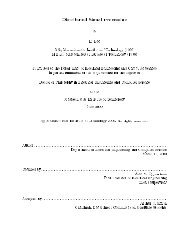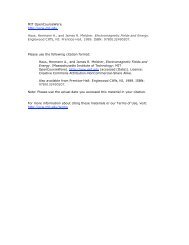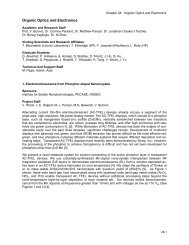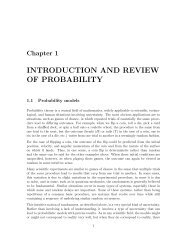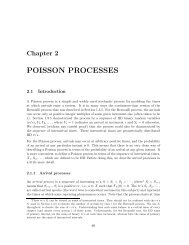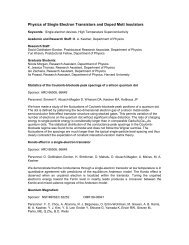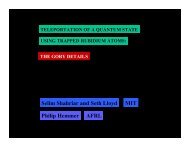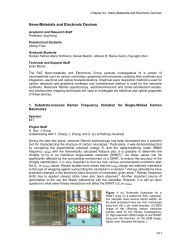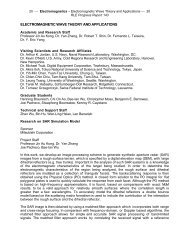Automotive Power Generation and Control - IEEE Xplore
Automotive Power Generation and Control - IEEE Xplore
Automotive Power Generation and Control - IEEE Xplore
You also want an ePaper? Increase the reach of your titles
YUMPU automatically turns print PDFs into web optimized ePapers that Google loves.
620 <strong>IEEE</strong> TRANSACTIONS ON POWER ELECTRONICS, VOL. 19, NO. 3, MAY 2004<br />
Fig. 3.<br />
Alternator operating loci for 14-V <strong>and</strong> 42-V operation.<br />
off rapidly, with no power generation at idle speed. Thus, the<br />
need to generate sufficient power at the low speed means that<br />
the peak power capability of the machine across voltage is not<br />
achieved at higher speeds.<br />
As described above, the output power versus output voltage<br />
curves of Fig. 3 are well-suited to an output voltage of 14 V,<br />
but not suitable for use at a higher voltage such as 42 V. If one<br />
wanted to operate at 42 V, one could rewind the stator with three<br />
times as many turns of wire having about the cross-sectional<br />
area. This would have the effect of stretching the horizontal<br />
axis in Fig. 3 such that the all the curves would peak with<br />
the same output power at 3 times the output voltage (e.g., with<br />
the 1800-rpm curve peaking near 42 V) 1 . Thus, to first order,<br />
the output power capability of an alternator of a given size does<br />
not depend on the output voltage for which it is designed, since<br />
the stator may be rewound to provide the same power characteristics<br />
versus speed at any other fixed output voltage.<br />
III. LOAD MATCHING CONCEPT<br />
We now introduce a new design <strong>and</strong> control approach for automotive<br />
alternators. The new alternator system utilizes both<br />
field control <strong>and</strong> a simple switched-mode rectifier to achieve<br />
substantially higher levels of power <strong>and</strong> performance than are<br />
obtained conventionally. High power is achieved by utilizing the<br />
switched-mode rectifier as a second control h<strong>and</strong>le to properly<br />
match the constant-voltage load to the alternator.<br />
A. SMR Load Matching<br />
Consider the alternator <strong>and</strong> switched-mode rectifier shown in<br />
Fig. 4. In this system, a diode bridge is followed by a “boost<br />
switch set” comprising a controlled switch (such as a MOSFET)<br />
<strong>and</strong> a diode . The switch is turned on <strong>and</strong> off at high<br />
frequency in a pulse-width modulation (PWM) fashion with<br />
duty ratio . The diode bridge operates in continuous conduction<br />
1 This may be seen by examining (1) <strong>and</strong> (2). Tripling the number of turns<br />
would raise the synchronous inductance by approximately a factor of nine <strong>and</strong><br />
raise the back emf voltage by a factor of three. Since the output voltage is tripled<br />
the output power capability will remain unchanged.<br />
Fig. 4. Switched-mode rectifier: (a) matching stage inserted in an alternator<br />
<strong>and</strong> (b) representative waveforms.<br />
mode (CCM), so that the diode is on when is off. The<br />
PWM operation of <strong>and</strong> causes the voltage to be a pulsating<br />
waveform with an average value dependent on the output<br />
voltage <strong>and</strong> the duty ratio . Neglecting device drops, <strong>and</strong><br />
assuming is relatively constant over a PWM cycle, we may<br />
calculate the local average value of as<br />
Similarly, assuming the diode bridge output current is approximately<br />
constant over a switching cycle, we may calculate<br />
the local average output current, , of the alternator system as<br />
In an averaged sense, the boost switch set acts a dc transformer<br />
with a turns ratio controlled by the PWM duty ratio . Because<br />
the PWM frequency is much higher than the ac frequency <strong>and</strong><br />
the machine inductances are relatively large, the alternator<br />
machine <strong>and</strong> diode bridge react to the average value of almost<br />
exactly as they would to the output voltage in a conventional<br />
diode-rectified alternator. As a result, by controlling the<br />
duty ratio , one has control over the average voltage at the<br />
output of the bridge, , to any value below the true output<br />
voltage of the alternator system, . The switched-mode rectifier<br />
(SMR) can thus be used as an additional control h<strong>and</strong>le<br />
to extract much higher levels of performance from the alternator.<br />
For example, consider that in the present system, the maximum<br />
possible output power of the alternator at a given speed<br />
<strong>and</strong> field current is determined by the average of , not by<br />
the output voltage . By adjusting the duty ratio , the alternator<br />
can generate up to its maximum power (across voltage)<br />
as speed varies, while supplying a constant output voltage, ,<br />
(of 50 V, for example). As illustrated in Fig. 5, this operating<br />
mode allows much more power to be drawn from the machine<br />
(3)<br />
(4)



